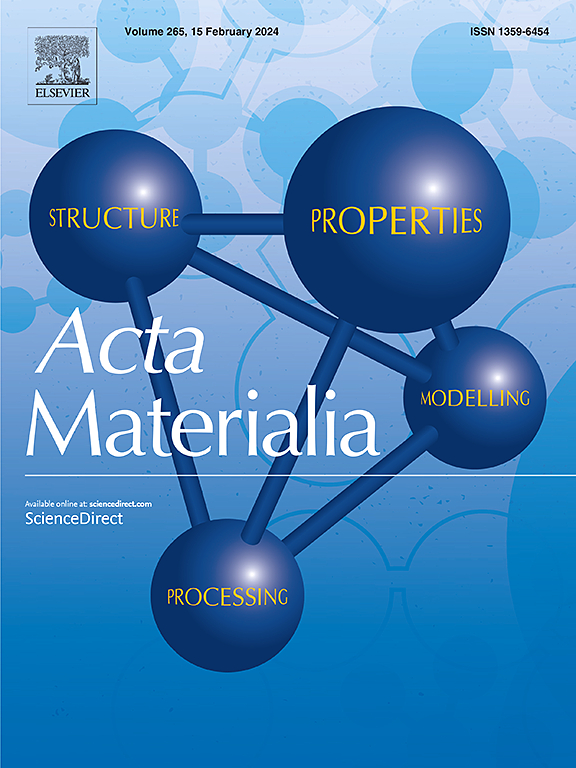Ferroelectric grain boundary complexion transitions
IF 8.3
1区 材料科学
Q1 MATERIALS SCIENCE, MULTIDISCIPLINARY
引用次数: 0
Abstract
By starting from equilibrium volumetric and interfacial properties of ferroelectric materials, a thermodynamically-consistent phase field framework incorporating polarization and space charge for polycrystalline ferroelectrics is developed. Building on Cahn’s critical point wetting variational analysis, a series of planar tilt grain boundaries in tetragonal ferroelectrics in the absence of point defects are investigated. We find that grain boundaries with (i) head-to-tail-like polarization configurations have built in E-fields and undergo order–disorder transformations with decreasing temperature or increasing misorientation and those with (ii) head-to-head-like polarization configurations are paraelectric with no E-field and become more structurally disordered with decreasing temperature or increasing misorientation. Results suggest that ordered and disordered grain boundary complexions can coexist in first order ferroelectrics at all temperatures below the Curie temperature, . In contrast, in second order ferroelectrics, results suggest that only one complexion will be observed at temperatures just below and, that on further cooling below a critical temperature, a second disordered complexion will develop for some grain boundaries, leading to abrupt changes in material properties.


铁电晶界复合转变
从铁电材料的平衡体积和界面性质出发,建立了包含极化和空间电荷的多晶铁电材料的热力学一致相场框架。在Cahn临界点润湿变分分析的基础上,研究了四方铁电体在无点缺陷情况下的一系列平面[001][001]倾斜晶界。我们发现,具有(i)头尾状极化结构的晶界在电场中建立,并随着温度的降低或错取向的增加而发生有序-无序转变;具有(ii)头尾状极化结构的晶界在没有电场的情况下是准电的,并且随着温度的降低或错取向的增加而变得更加无序。结果表明,在居里温度(TcTc)以下的一阶铁电体中,有序晶界和无序晶界可以共存。相反,在二阶铁电体中,结果表明,在略低于TcTc的温度下,只会观察到一种色相,当进一步冷却到临界温度以下时,在某些晶界上会出现第二种无序色相,导致材料性能的突然变化。
本文章由计算机程序翻译,如有差异,请以英文原文为准。
求助全文
约1分钟内获得全文
求助全文
来源期刊

Acta Materialia
工程技术-材料科学:综合
CiteScore
16.10
自引率
8.50%
发文量
801
审稿时长
53 days
期刊介绍:
Acta Materialia serves as a platform for publishing full-length, original papers and commissioned overviews that contribute to a profound understanding of the correlation between the processing, structure, and properties of inorganic materials. The journal seeks papers with high impact potential or those that significantly propel the field forward. The scope includes the atomic and molecular arrangements, chemical and electronic structures, and microstructure of materials, focusing on their mechanical or functional behavior across all length scales, including nanostructures.
 求助内容:
求助内容: 应助结果提醒方式:
应助结果提醒方式:


